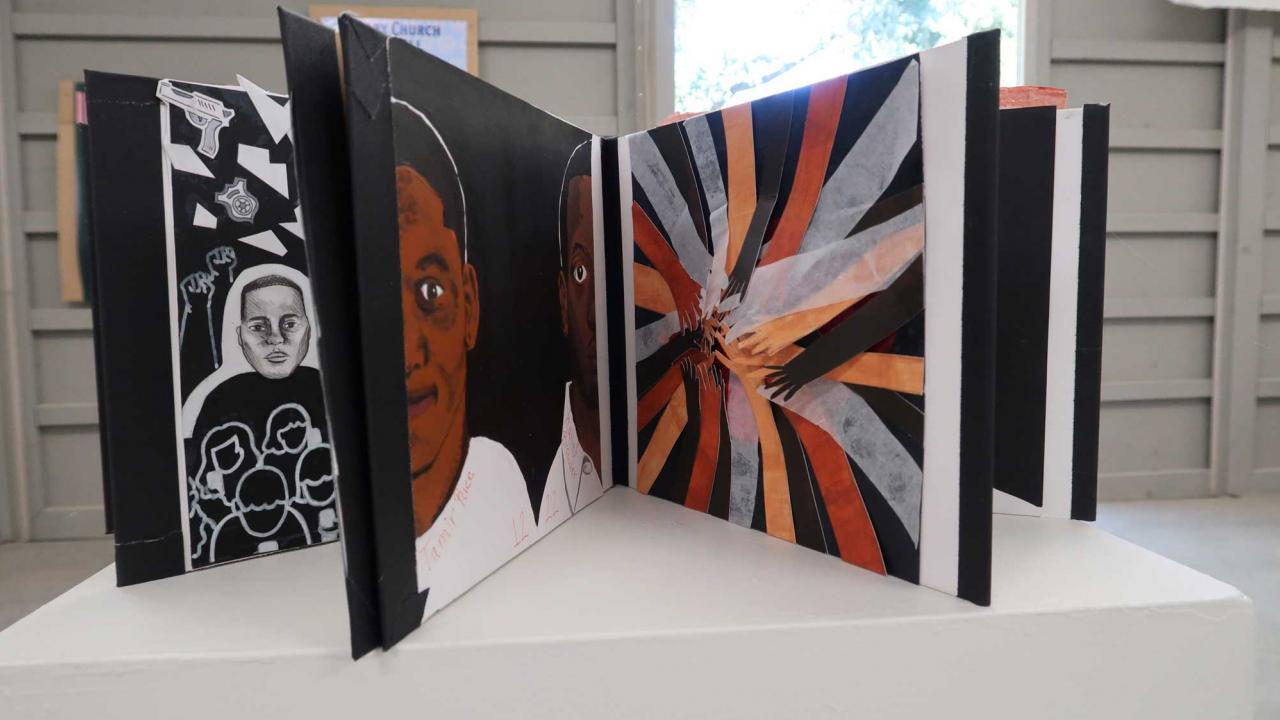
About this story
We had the opportunity to talk to design lecturer and artist Melissa Chandon and teacher assistant and designer, Harold Linde, who together taught Design 15: Form and Color two consecutive quarters, helping create two student projects — Project: Hope and Black Lives Matter.
We also had a conversation with students whose works were included in the books.
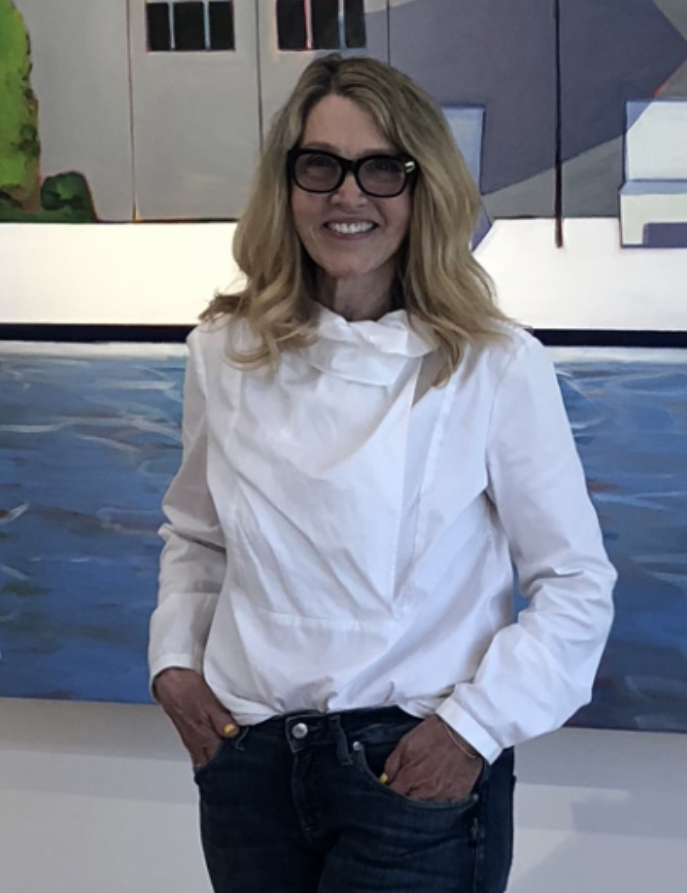
The current exhibition Art. In. Action at the Barn Gallery in Woodland features Project: Hope and Black Lives Matter, two books compiled in a collaboration of 43 UC Davis students in Design 15: Form and Color.
Art. In. Action honors Black women heroes, civil rights leaders, and women who have been killed by police. Presented in the form of two books Project: Hope, and Black Lives Matter, give insight as to how students can take action through art. They visually communicate their hopes for the future and amplify Black stories as well as bring the Black Lives Matter movement to the forefront.
The exhibition of both UC Davis-created books is on view through June 19, closing with a Juneteenth freedom celebration that day from 12:30 p.m. to 3 p.m.
Class, over two quarters, produced projects
Design 15: Form and Color is the name of the class that aims to go beyond composition and color theory, providing students with the opportunity to visually communicate their personal narratives. With the COVID-19 pandemic and the continuation of the Black Lives Matter movement, students had plenty to say. As a project-oriented class, lecturer Melissa Chandon gave her students the option to participate in two projects that later became the books Project: Hope and Black Lives Matter, she explained.
As a foundation studio course required for all design majors, Design 15 brought in not only students beginning their journey into the department, but also individuals from all majors and backgrounds. In a normal setting, all 50 students would be in one room, working together as the professor and teaching assistant engage in the process of the student’s work. This all changed when UC Davis went fully remote in spring quarter 2020.
Students and instructors alike found themselves in a virtual space, with only their mandatory course kits of art supplies to remind them of the feeling of being in a studio class.
'Black Lives Matter'
The book Black Lives Matter includes the works of 21 students who took Design 15 in spring 2020. As the final project for the course, Chandon gave her students the option to create a work of art as a way to respond to what was happening with Black Lives Matter.
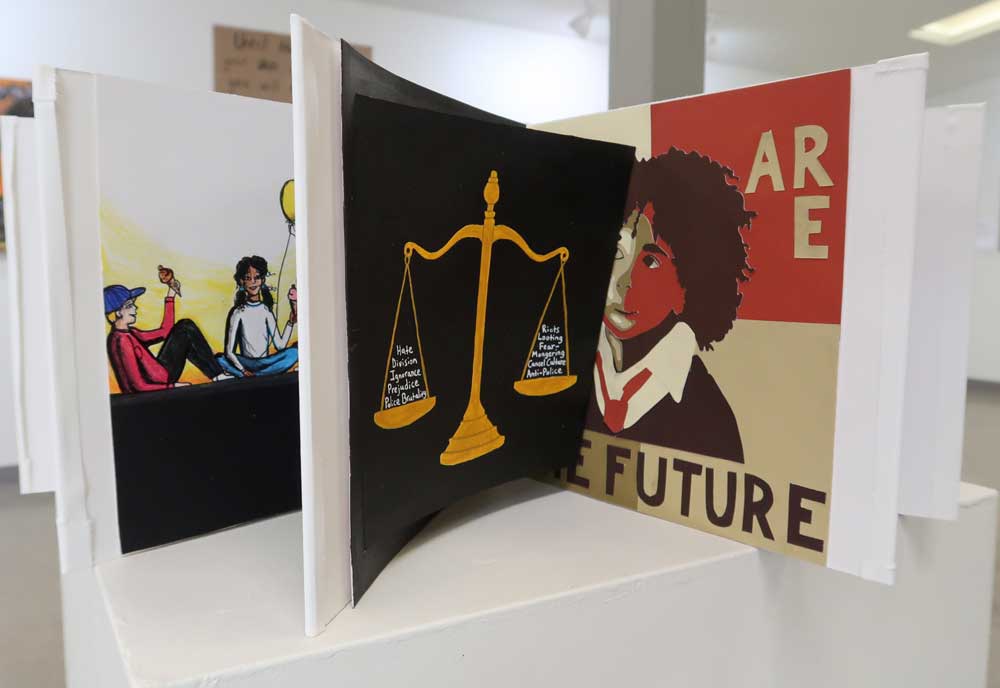

Participation was optional because, Chandon acknowledged, individuals deal with experiences differently. “I did not want to pressure my students and make them feel like they need to have something to say,” she said.
Cooper Mervin, who is white, was inspired to contribute to the book as part of his final, choosing to use quilting and texture to create his piece. His 8-by-8-inch work was made out of two crumbled tracing papers stuffed with plastic bags and then sewn together.
The work served as a reminder of the long tradition of quilting in the Black community, he said. Mervin added that he was also inspired by his English 10C course that he was taking the same quarter, in which he was reading and studying poetry by Black writers before he fully became aware of the Black Lives Matter movement.
“I was trying to bring together the two classes that I had taken that quarter and how they were coming together for me in that moment.”
The final part of his creation was to add color. Having never painted before, he knew he wanted to mimic blood, and stain the quilt with red because “the world felt bloody, and the news felt bloody.” The result was a quilt-like design with titles of poems by Caribbean and American Black poets.

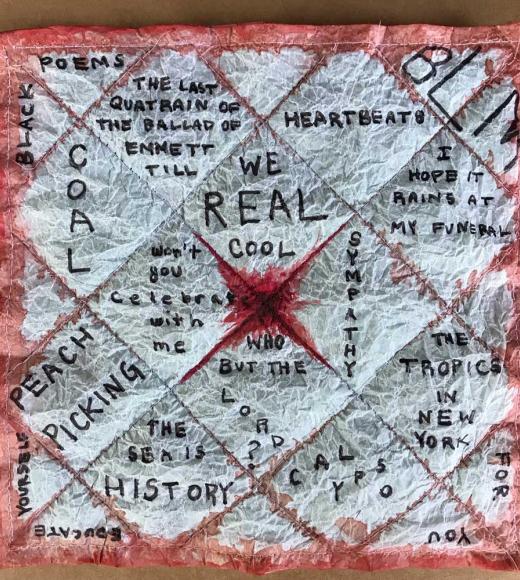
Mervin talked about his role in contributing to the project as a white person. “How I rationalized it for myself was the fact that it was me trying to illustrate the feelings that I was seeing around me, as well understand the feelings that I was feeling within myself, like my whiteness and my privilege.”
'Project: Hope'
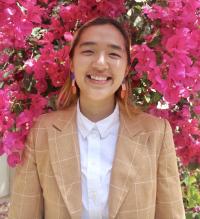
In the next fall quarter 2020, Project: Hope was created. Chandon began to work with MFA Design graduate student and designer Harold Linde. Chandon was inspired to create Project: Hope after Linde gave a talk to the Design 15 class about Shepard Fairey, the creator of the ‘Hope’ poster for Barack Obama’s presidential campaign. Chandon admires Fairey’s work because he brings awareness to social issues, she explained. “Because the classes I teach are design classes and not art classes, I like to show my students designers who are engaged in active conversations — environmental, political etc...I am not sure if the general public is aware that Fairey simply created the Obama HOPE Poster as opposed to being commissioned to create it.”
Linde’s talk about Fairey motivated Chandon to create Project: Hope. “I wanted the students to start creating these things in which we could see equality, in which we could see fairness, in which we could see love, and in which we could see compassion,” Chandon explained.
Christina Liu was one of the 22 students who contributed to Project: Hope. At the time, Liu was a first-year student not only taking her first studio class but transitioning into the UC system during a time when everything was remote. Despite this difficult transition, Liu felt she had something to say about what the world could look like.
Liu’s contribution had to do with humanity, she explained, “The whole concept was having these almost godlike hands come out from these edges and seem like they are pushing together pieces of the Earth, and at the center there is a heart.” Each gesture was symbolic for the different ways in which people are making an effort to bring the world back together and the heart communicated that this was done out of love.
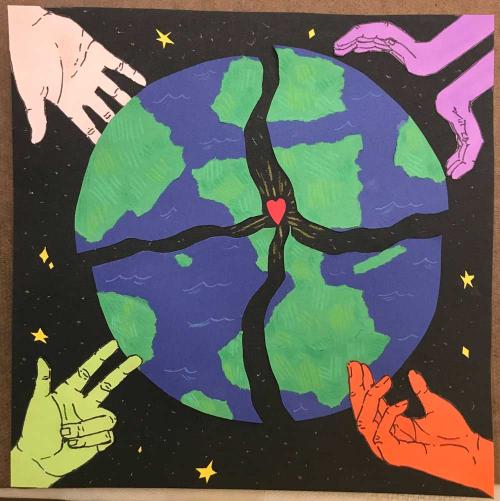
“I didn’t want to be limited just to the skin tones that humans have. As a person that loves color, I wanted to go beyond that,” she explained about her work, which features hands that are purple, orange and green. Liu said she wanted to visually communicate that humans are more than just the color of their skin and what they look like.
Getting the art in public
From the start, Chandon promised her students she would find a way to get their work in a public venue, but the opportunity did not present itself until the Yolo County Arts Council created Art. In. Action. Initially, Chandon envisioned that the work of her students would be displayed in a grid-like manner, on a wall of an exhibition. There was not enough space in the exhibition to showcase the 43 works individually, however. Without knowing how the presentation would affect the final result, Chandon proposed creating two books. Chandon and Linde co-created the Project: Hope and Black Lives Matter projects, assembling the students’ works into two books in an accordion style, which could be displayed and stretched out horizontally on a ledge, or on a pedestal as a carousel. This is how it is displayed in the exhibition — where viewers can walk around the books and look at each work.
Chandon and Linde were pleased with the results.
Going Forward
The UC Davis Shields Library Archives and Special Collections is going to acquire Project: Hope and Black Lives Matter. Project leaders are looking for potential funding to be able to share them even further.
Power of collaboration
Linde and Chandon are always impressed at the quality of work of their students in Design 15, but when it came to Project: Hope, and Black Lives Matter, Chandon and Linde were "blown away” by the collaboration. The books each told a story, and it was clear that one more student’s work, one less submission, or even one different idea, could have drastically changed each book, they said.
“Individually,” Linde added, “as the submissions were coming in they were interesting and compelling but when they were put together — there was this whole other exponentially synergistic power.”

Media Resources
